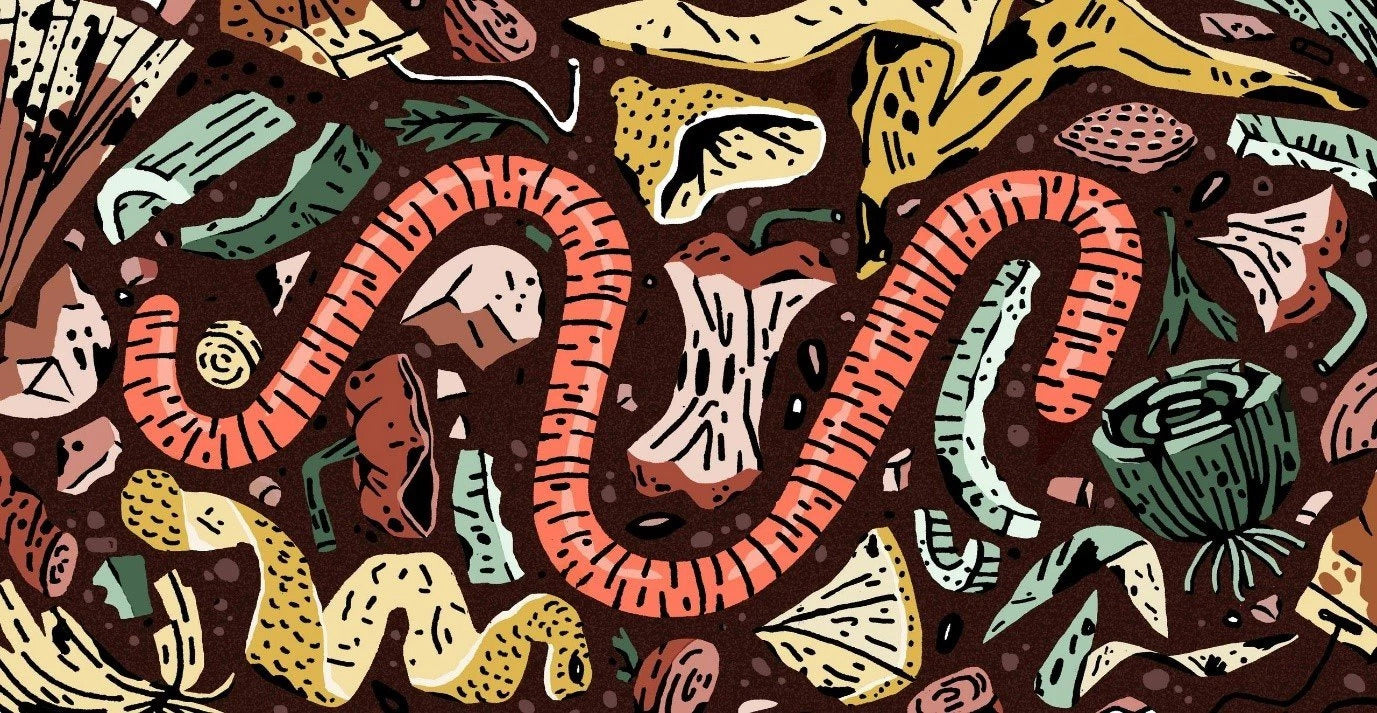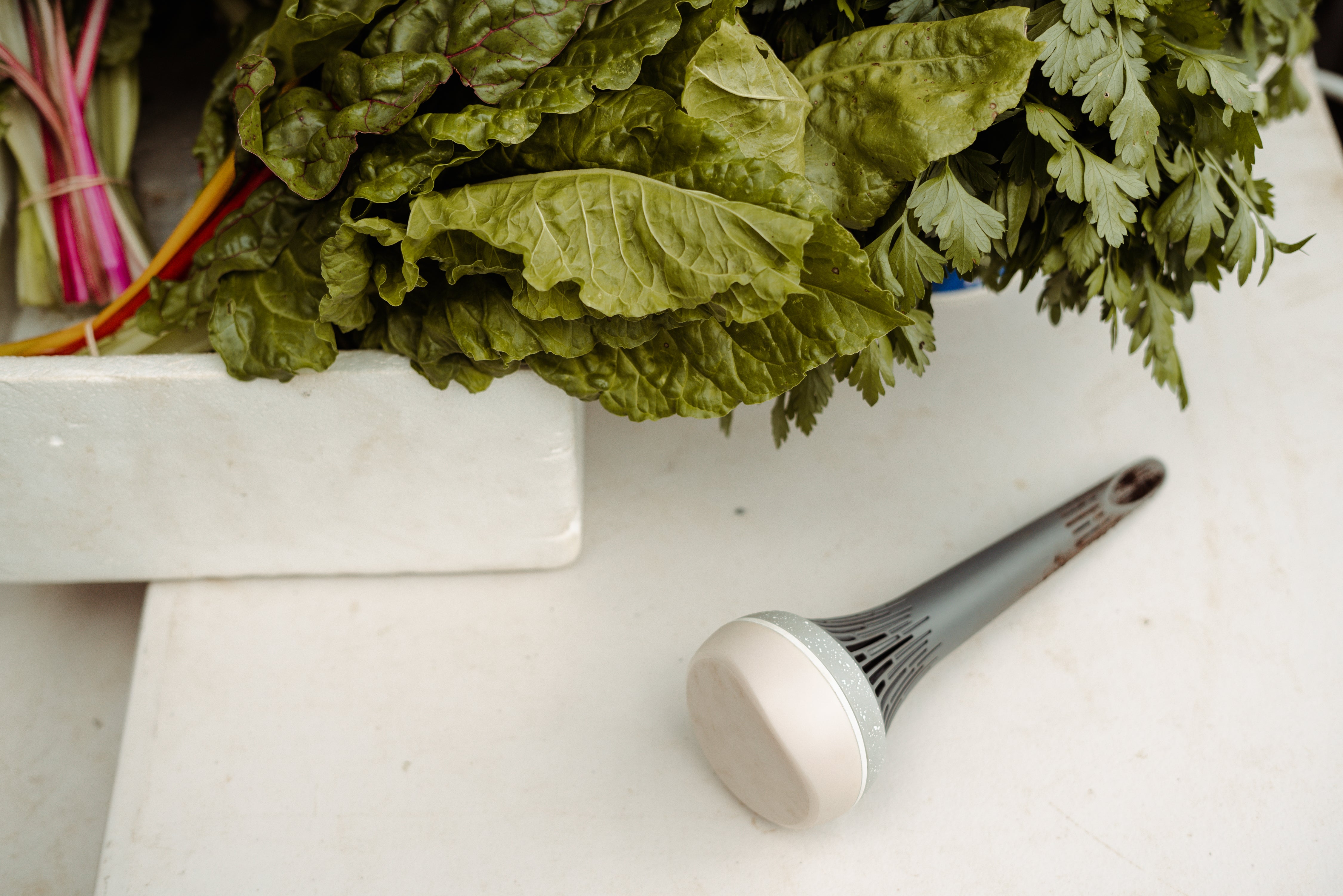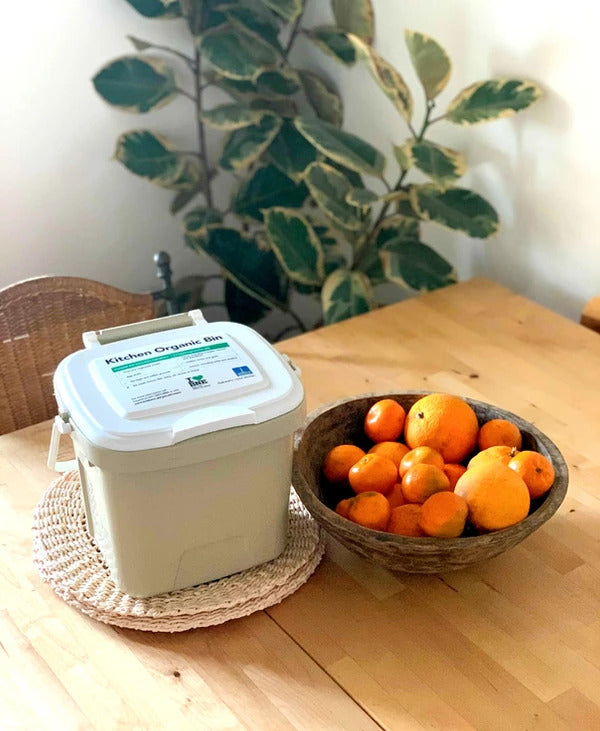We didn't know anyone as keen on compost as we are ... until we met the amazing team at HeapsGood Packaging! They're makers of a mailer bag that actually breaks down in your home compost, unlike others that just turn into a melted mess and they sure do know their stuff.

Why Should I Compost?
If you care about the environment, choosing to compost at home is one of the most impactful decisions you can make.
Approximately 35% of the average household bin is food waste. Over 5 million tonnes of food ends up as landfill, enough to fill 9000 Olympic size swimming pools.
Composting is a process that speeds up the natural decay of organic material by providing the ideal conditions for detritus-eating organisms to thrive.
The end result is nutrient-rich soil that helps your crops, garden, plants and trees thrive.
The other environmental benefit of composting is that it helps tackle the huge greenhouse gas problem posed by landfills.
Basically, all the trash sent to landfill decomposes and releases methane, a greenhouse gas that’s 28 times more potent than carbon dioxide.
So how exactly do you compost at home? Let’s walk you through it with 5 easy steps.
How to Compost at Home
1. Setting up
Pick a spot in your garden that is dry and shady. Don’t want to buy a compost bin? You can easily use an old bin or large container you'll just need to drill some holes in it. Add a course layer of dry material to the bottom of your bin like sticks and twigs to encourage air circulation.
2. Browns or dry matter
These are dry materials rich in carbon or carbohydrates. The main job of browns is to be a food source for all of the lovely soil-dwelling organisms that will work with the microbes to break down the contents of your compost pile. Brown materials also help to add bulk and allow air to filter through your pile.
- Eco-mailers
- Leaves, straw
- Cardboard, toilet paper rolls, egg cartons
- Sawdust, wood ash
- Paper (newspaper, writing/printing paper, paper plates and napkins, coffee filters)
- Cotton, dryer lint
3. Greens or wet matter
Greens are materials that are rich in nitrogen or protein. They are also the items that tend to heat a compost pile up because they help the microorganisms in the pile grow and multiply quickly.
- Vegetables/fruit scraps
- Eggshells
- Tea leaves/coffee grounds
- Grass clippings/twigs and branches/weeds/green leaves
- Manure (not dog or cat)
4. The correct ratio
We like to aim for a 1:3 ratio of greens to browns in weight, but don't worry about being too precise here, just make sure you layer your compost well. Think of it like a delicious lasagne for your garden with your browns being your filling and your greens being your pasta sheets! Always try to cover your greens with a new layer of browns and add greens in a nice thin layer so they can get in contact with the carbon-rich browns. Diversity is key to a good carbon: nitrogen ratio and a healthy balance of microbes so don’t be scared to mix it up with what you put into your bin.

5. Airflow and moisture
Remember to turn your compost every 10-14 days to optimise airflow and check for moisture. This is the best time to give your compost a little water if it's starting to get dry. The microorganisms in your compost need oxygen and H2o — but you don’t want to drown them either!
Extra Tips
If you're looking for a really cool and easy method to check your compost and get lots of handy tips we recommend Monty, a brilliant piece of Aussie designed smart tech that brings composting into the 21st century.
Common Questions
Q: Should you put meat and dairy in your compost bin?
A: The simple answer is you certainly can, but it will take longer to break down than other organic matter and may make your compost bin a little pongy. If you want to introduce these types of things into your compost then we suggest a Bokashi bin these are a cheap odourless way to start the breakdown process and make the perfect kitchen counter bin.
Q: I live in an apartment and don’t have room for a compost bin!
A: Then a Worm farm or Bokashi bin is the perfect alternative. These don’t smell at all and can break down a whole range of things in a quick and easy manner. We also strongly encourage you to utilise your green bin as supplied by most councils in Australia. These are a fantastic initiative allowing everyone to essentially compost their waste no matter if you have a garden or not!
Q: Can my Eco-mailer go in my green bin?
A: You’ll need to check with your local council on this one (unless you live in S.A in which case yes!) as it comes down to each area and the contracts, they hold with their respective composting and recycling plants. We are working with local councils to implement statewide allowance such as is available in S.A and it’s only a matter of time before this becomes more common than not. By 2025 we envisage every council Australia-wide will allow Eco-mailers (with the home compostable standard) to be put in your green bins.
Q: What about worms?
A: While earthworms will naturally find their way into your compost bin (as long as you’ve drilled enough holes or have an open bottom compost) it can help to speed up the composting process. But there is no point adding regular old earthworms, you want red wrigglers which are able to eat half their body weight in food every day and produce something called black gold. No, not oil but something much more valuable: nutrient-rich soil that will supercharge your garden and plants better than any store-bought potting mix or fertilizer ever could.
Be Part of the Solution
Composting has numerous benefits for our planet – and if widely adopted could have a profound effect on reducing landfill and help rapidly reduce the climate change risk.
Use the tips in this article to get started and make a difference now. Remember, we don't have to engage in grand, heroic actions to participate in change. Small acts, when multiplied by millions of people, can transform the world.
REFERENCES
All claims made in HeapsGood Packaging articles are based on peer-reviewed scientific literature, reputable media sources or non-for-profit research. We are dedicated to bringing you the facts on the future of sustainable packaging.
Department of Sustainability, Environment, Water, Population and Communities (2012). Food and Garden Organics Best Practice Collection Manual. https://www.environment.gov.au/system/files/resources/8b73aa44-aebc-4d68-b8c9-c848358958c6/files/collection-manual-fs2.docx
NSW Environment Protection Authority (2019). Organics Infrastructure Fund. https://www.epa.nsw.gov.au/working-together/grants/organics-infrastructure-fund.
Global Methane Initiative (2010). Estimate global anthropogenic methane emissions by source. https://ensia.com/features/climate-change-mitigations-best-kept-secret/.




Leave a comment
This site is protected by hCaptcha and the hCaptcha Privacy Policy and Terms of Service apply.